Health & Education
We all want the best care possible for our horses. The Heath & Education section covers both Learning Institutions, Organizations as well as many sources for equine assistance including Veterinarians and Farriers.
For those who want a to formally study horses, the Education section includes College Riding, Equine Studies, and Veterinary Schools. Learn about the wide variety of horses in the Horse Breeds section. Supplements and Treatments Therapy are also included in the section.
Everyone can learn from Fine Art and there are some specialty Museums that might surprise you.
Horses as a therapy partner enrich the lives of the disabled. These facilities are listed in our Therapeutic Riding section. To help children and young adults build confidence and grow emotionally, please see the resources available on the Youth Outreach page.
Looking for a place to keep your horse? You can find it in the Horse Boarding section. Traveling? Find a Shipping company or Horse Sitting service if your horse is staying home!
Want to stay up to date with the latest training clinics or professional conferences? Take a look at our Calendar of Events for Health & Education for the dates and locations of upcoming events.
Do we need to add more? Please use the useful feedback link and let us know!
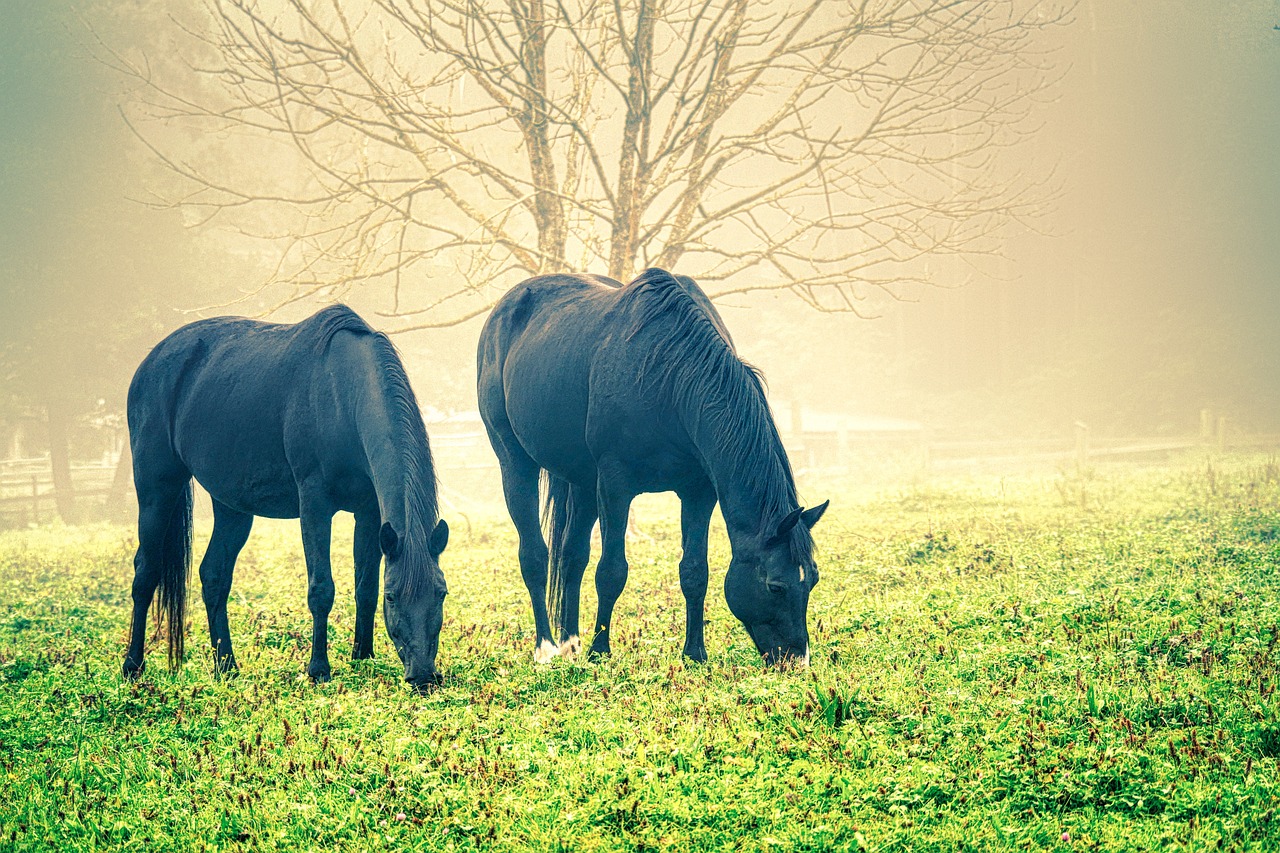
By Juliet M. Getty, Ph.D.
Reasonable, gradual weight loss can be achieved by creating an environment that allows horses to eat and behave in sync with their normal instincts. Hormones such as insulin, cortisol, and leptin are in homeostasis, where the body achieves a state of equilibrium and performs as it should.
It starts with making the horse feel safe. The foundation of safety is knowing that there is always something to eat. Without this, the very underpinning of health becomes unhinged. Piling supplements and expensive feeds onto this insecure footing will make a trivial, insignificant, and short-term difference.
A steady, never-ending supply of appropriate hay/pasture will allow your horse to realize that he can eat effortlessly. In very little time, he will begin to self-regulate his forage intake and eat only what his body needs to maintain condition.
There are cases, however, where the horse not only doesn’t self-regulate, he actually gets heavier. Why is this? And if this is your horse, is there no hope? Do you simply have to go back to restricting hay? There are several reasons why this can occur and no, you do not and should not go back to restricting hay.
Free-choice forage is fundamental but it is not enough
If you are expecting to simply give your horse all the hay he wants and he’ll start to miraculously lose weight, while his nutrient intake remains inadequate and there are significant stressors in his life, you will likely be disappointed.
Free-choice forage feeding will, however, improve his behavior and digestive health, even without weight loss. But to have an impact on his weight, other practices need to be in place.
Four components should be considered
An excellent diet, stress reduction, the right environment, and patience are key ingredients to making weight loss a reality. Below are factors that can make this happen. I realize that for many of you, it is not feasible to implement all of them. My goal is to give you the ideal situation; your goal needs to be to come as close to the ideal as possible.
Even making some of these changes will improve your horse’s health.
1. Excellent Diet
Appropriate forage
The hay and/or pasture need to be low in sugar and starch, as well as low in calories, because your horse will be eating a lot of it. Testing your hay is critically important. If Ethanol Soluble Carbohydrates (ESC) + Starch exceeds 11% on a dry matter basis, you’ll want to seriously consider soaking it.[i]
If the hay supply changes frequently where your horse is boarded, consider buying your own hay; even a one month’s supply is worth testing.
Pasture grazing, of course, is ideal, but it can be tricky because its sugar and starch content varies so much. It, too, is worth testing periodically at the best and worst times of the day.[ii] The ideal is a pasture with a mix of healthful forage. Many horses can lose weight while pasture grazing in such conditions; it is the most natural, least stressful state for the horse, and provides the most nutritious whole food.
Aggressively attack inflammation
Where there’s body fat, there’s inflammation, leading to insulin and leptin resistance. A vicious cycle ensues because leptin resistance prevents the brain from telling the horse that he’s had enough to eat, and insulin resistance tells the horse to hold on to body fat. In both of these situations, body fat increases, further exacerbating inflammation.
To effectively reduce inflammation, boost the diet with antioxidants, anti-inflammatory herbs, key minerals, and the right balance of omega 3s to 6s, preferably from supplements that provide wholesome ingredients without the use of added preservatives. Please review articles[iii] in my website’s resources for specific ways to accomplish this.
Get rid of the concentrates
Supplements can be added to a small amount of a carrier feed such as hay pellets, non-GMO beet pulp, or whole foods (avoid soy). But do not feed large amounts of any “grain” including those that contain cereal grains (oats, corn, barley, rice, etc.), molasses, or added vegetable oils; these do nothing except add unnecessary calories.
2. Stress Reduction
Forage restriction is incredibly stressful
The horse’s digestive tract is designed for a continual flow of forage; without it, the horse will be in physical pain, mental discomfort, and prone toward a hormonal response that destroys health and promotes obesity.[iv] If he runs out of forage, even for a few minutes, your horse’s system will register this as an impending famine and his body will hoard fat.
The damage from prolonged forage restriction can be difficult to repair
The only way to fix your horse is to help him return to his natural state. However, the longer a horse lives as an overweight, stressed animal, the more inflammation he will have within his system, making it difficult it to bring that horse back to a normal weight, free of leptin or insulin resistance.
Years of enduring forage restriction will definitely take its toll. But the solution is not to continue down this destructive path; the solution is to try to make things better.[v]
Grazing muzzles may defeat your purpose
If your horse tolerates a grazing muzzle, it can allow him to spend some time out on pasture with his buddies. But a muzzle can defeat your purpose if it causes frustration and its attendant cascade of stress-induced hormonal reactions. So pay attention to your horse.
Even if he accepts the muzzle, limit its use to no more than 3 hours per day. Muzzles are hardly ideal—they do not really allow sufficient forage consumption for healthy digestive functioning, but the benefits of exercise and companionship in the pasture can outweigh the downside of short term reduction in forage intake.
Make certain that your horse can drink water and that water drains well.
3. The Right Environment
Movement is so important
Movement does more than burn calories; it keeps your horse whole, physically and psychologically. Confinement to a small paddock (even though it is outdoors), or worse, to a stall, for hours on end, reduces circulation, increases the horse’s sense of vulnerability, increases susceptibility to depression, creates inflammation throughout the body, decreases the metabolic rate, reduces immune function, and depresses digestive tract motility, to name only a few outcomes.
All of these have the same impact on your horse’s weight – they can lead to obesity because of the hormonal and metabolic responses that tell the horse to hold on to body fat.
Freedom to roam and interact with other horses
Horses require the protection of a herd. They are also social animals and need the interaction of close physical contact; merely seeing other horses over the fence is not enough.
Room to roam, along with freedom to choose whether to be out in the sunlight, or under a tree, or in a shed -- perceiving he has options for comfort and safety is a calming force for the horse.
Slow feeders can be wonderful when used correctly
Slow feeders come in a variety of styles and methods.[vi] Allow your horse to gradually become accustomed to eating from them by also providing loose hay.
Feeders need to be kept full at all times, the hole size for netted styles should not be smaller than 1.5 inches, and, depending on design, they should be kept low or on the ground to simulate the horse’s natural eating stance. Provide many of them throughout his area to encourage grazing.
4. Patience!
At first, he will overeat
Give a horse all he can eat, and at first he will overeat, a lot! It can be difficult to watch. Be sure you’ve tested your hay and it is suitable. Then give him more than he could possibly eat so that there is some left over. If you don’t give him enough and he eats it all, you will not accomplish your goal.
But if he has so much that he can’t finish it, and he can leave and return to find it still there, he will eventually reach the magic moment – he will walk away! Eventually, he will eat far less than he did at the beginning.
Many barn managers are not willing to do this because it seems like a waste of money. But in actuality, the horse will eat less once he self-regulates than he did when he was only getting a set ration of hay.
Give it enough time. Most horses start to self-regulate within a couple of weeks. Some take a couple of months. And those who are leptin resistant take even longer.
Sometimes it’s gas, not fat
Forage contains large amounts of fiber, which is fermented in the horse’s hind gut (cecum and large colon), resulting in gas formation. This is normal and healthy, but it can make your horse look pregnant. This is not fat; it’s gas--otherwise known as a “hay belly.”
Do not let it concern you. Your horse will adjust. If it gets excessive, however, it would be best to help out the microbial flora in the hind gut by administering a good prebiotic.[vii]
Horses will gain weight at first
Overeating naturally leads to weight gain. But it is only temporary. Allow for movement, feed an anti-inflammatory diet, get rid of stress, and you will have a different horse.
Abandon the conventional weight loss mantra!
“Eat less!” This continues to be spouted by many horse owners and equine professionals. In fact, equine research in this area has revolved around reducing forage, often with “positive” results.
But it is exceedingly short-sighted! What they don’t tell you is how those same horses are doing a year later. Nor do they examine the inflammatory, metabolic, endocrine, physiologic, and even hypothalamic damage in the brain that results from forage restriction.[viii]
We know about the damage this causes to humans. Why do we use this method with horses? Excessively reducing calories will result in weight loss. But wait! Give it some time and the weight not only creeps back but even more weight is put on.
Recently, the New York Times did a piece on the “Greatest Losers,”[ix] a reality TV show where overweight men and women underwent extreme dieting and exercise and were praised by all in their efforts as they showed off their newly trim selves. Six years later, they were back to where they started, or worse, due to a shift in normal metabolism.
It is no different for horses. Prolonged forage restriction ultimately resets the metabolic rate to a slower level. In addition, the body’s hormonal response changes, making it very difficult for the horse to successfully keep off the weight without sacrificing health and quality of life.
Bottom line
Why not simply allow your horse to be healthy? Weight loss the wrong way will ensure that your horse will get fat again. Being patient, reducing inflammation and stress, and creating a healthy environment will do the trick. Sure, take away calories from concentrated feeds – that’s fine. But never, never restrict forage.
This article originally appeared on Getty Equine Nutrition and is published here with permission.
Find more informative articles in our section on Health & Education.
Read more: My Horse is Gaining Weight on Free-Choice Forage! Why Isn't it Working?
Whether you are looking to take home high-point champion or just have an overall positive experience for your young horse, here are six important items to have in tow for your next show day!
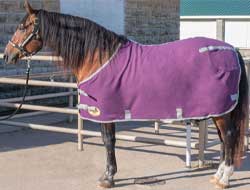
Fleece Horse Sheet
Fleece sheets are ideal to wick away sweat from riding and hauling. They also offer horses warmth and help keep them clean. Our favorite feature of this sheet is that you can customize with a monogram and choose everything from tread color to font and placement of your design. They also serve as a great extra layer beneath winter blankets for the coldest winter weather.
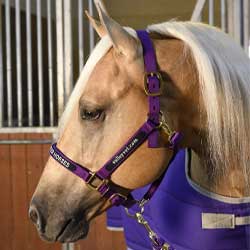
Personalized Nylon Halter
Match to your horse’s blanket or sheet with this personalized nylon halter. You’ll enjoy the many customization options available right at your fingertips, from color to font and more. See for yourself in this video!
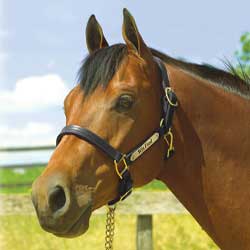
Premium Leather Halter
This premium leather halter, with the option to engrave your horse’s name, offers a classic look that pairs perfectly with show day. Plus, Perri leather halters are crafted from wide, triple-stitched leather that is supple right from the start.
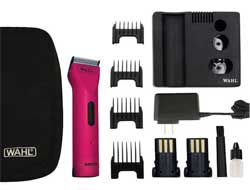
Wahl Clipper Kit
Everyone is in their Sunday best come show day, horses included! For clipping, look to this kit from WAHL for a smooth and quiet trim. The kit includes:
- Clipper (variety of colors available!)
- Two battery packs
- Charging base
- Clipper case
- Detachable blades
- Four guide combs
- Oil
- Cleaning brush
- Grooming Tote
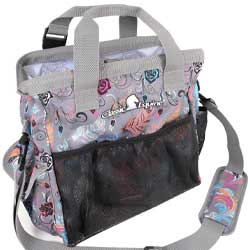
Groom Tote
Organization is crucial during a busy day on the show grounds. Available in several fun colors and patterns, this handy groom tote comes equipped with multiple dividers, sturdy pockets and a padded shoulder strap. See how many items you can tote in this tote, here!
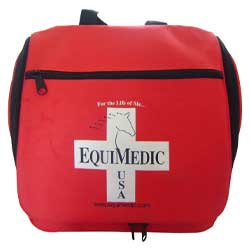
Equine First Aid Kit
When traveling anywhere, whether for show or play, it is crucial to bring an equine first aid kit with you, should your horse become injured. We couldn’t agree more with the words from one of our customers, “Fortunately, I have not had to use this, but I am happy to have [an equine first aid kit] handy and available, in case of need.”
At Valley Vet Supply, we’re here to help you care for your horses the best way we know how, with great quality products. Visit ValleyVet.com today for your every equine and show-day need.
- Inside the Recipient Mare Herd from the Rood & Riddle Reproduction Center with Crystal Howard" (24:28)
- Breeding for the Next Champion: 6 Important Considerations for Broodmares
- Empty Fields Everywhere Why Movement is So Important
- Hard Tying the Horse to a Rail or Post with Michal Kays (5:37) - Certified Horsemanship Association
- The Icelandic Horse - Quite the Characters!
- 4 Signs of a Happy Horse
- Stallside Podcast - Behind the scenes with the Rood & Riddle Anesthesia and Surgery Technician Team (34:01)
- Breaking the Cycle of Hoof Lameness: Navicular, Laminitis, Pedal Osteitis (14:25)
- Rood & Riddle: Advances in Equine Healthcare (6:37)
- Extending Photoperiod for Muscle Development in Young Horses
- Adopting a Wild or Feral Mustang?
- Rood & Riddle Stallside "Inside the Breeding Shed with Sandy Hatfield, Stallion Manager at Three Chimneys Farm" (31:37)
- The Horses of Iceland - Many Different Colors
- Minis – A Big Horse in a Little Package
- Holding the Horse for the Vet or Farrier with Julie Goodnight (7:03)
- Fitting the Martigale with Julie Goodnight (12:33)
- Colic in Horses, Explained
- Lengthening and Shortening the Horse's Strides with Ann Brzezicki (20:31)
- Equine Asthma: Current Understanding and Future Directions Research - Dr Dorothee Bienzle (14:25)
- The Real Cost of Horse Ownership - Jackie Bellamy-Zions (5:51)

































